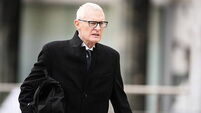Limerick school project combine sculpture, science, and local apple trees

It’s one of the best-loved and most often-repeated tales of scientific discovery: the “Eureka” moment when 17th century physicist Isaac Newton discovered gravitational force while watching an apple fall from a tree in his mother’s garden in Woolsthorpe Manor in Lincolnshire. The self-same tree, a traditional cooking apple variety, is now over 400 years old and is still fruiting, despite having been threatened by storm damage in the 19th century.
Now, three trees grown from seeds from Newton’s tree stand in the grounds of Colaiste Íde agus Iosef in Abbeyfeale in Co Limerick; as a symbol of the legacy of scientific endeavour, it is hoped that they will help to plant seeds of inspiration in fertile young minds for generations to come.











